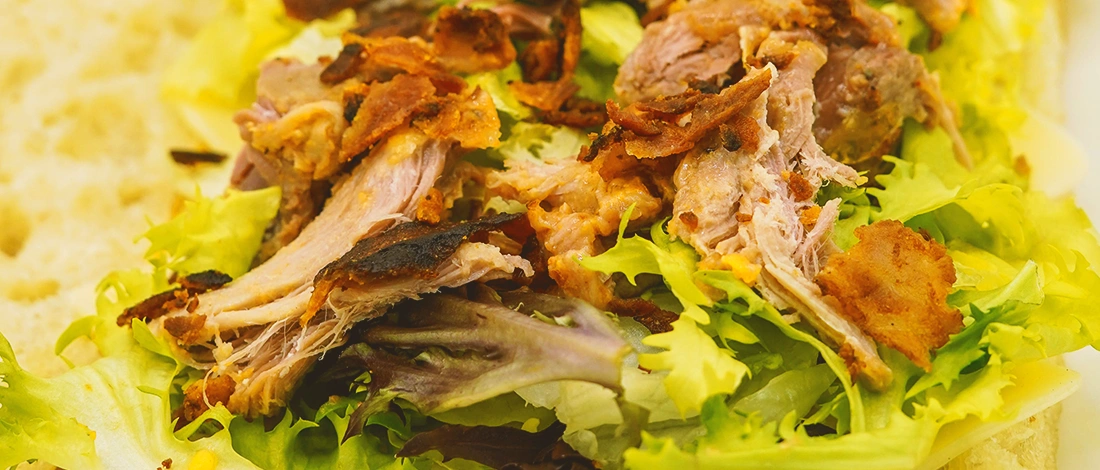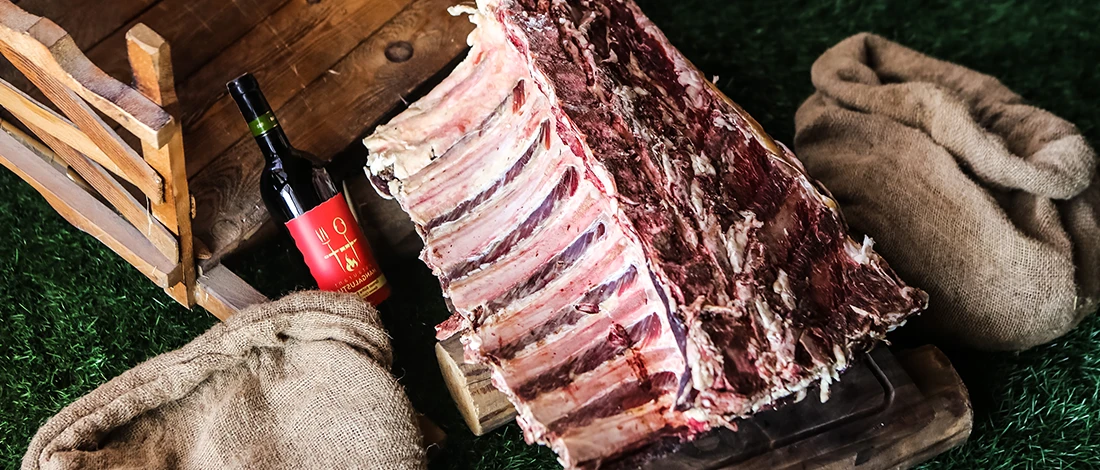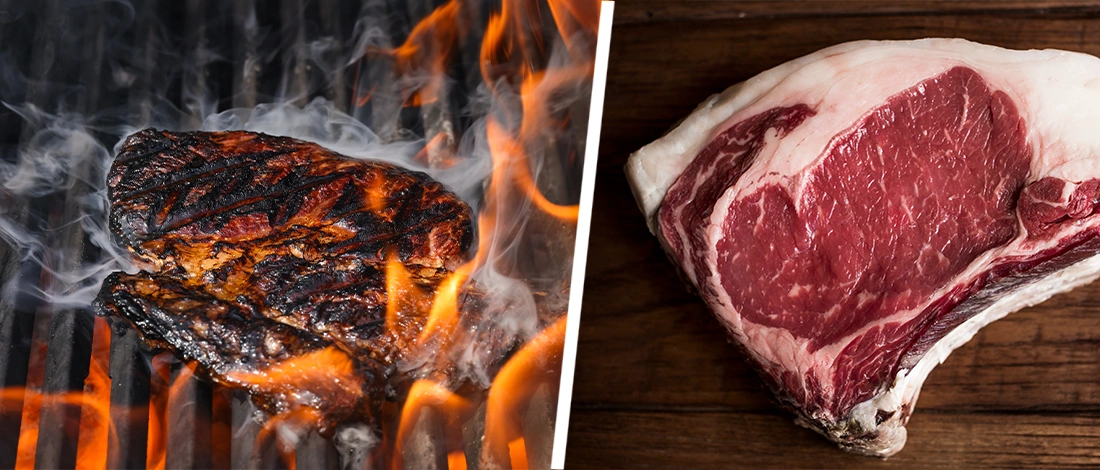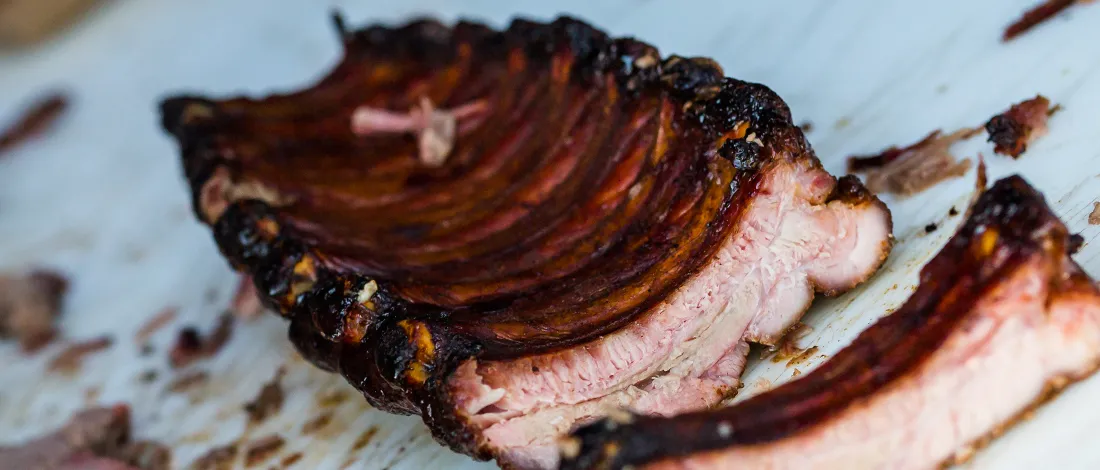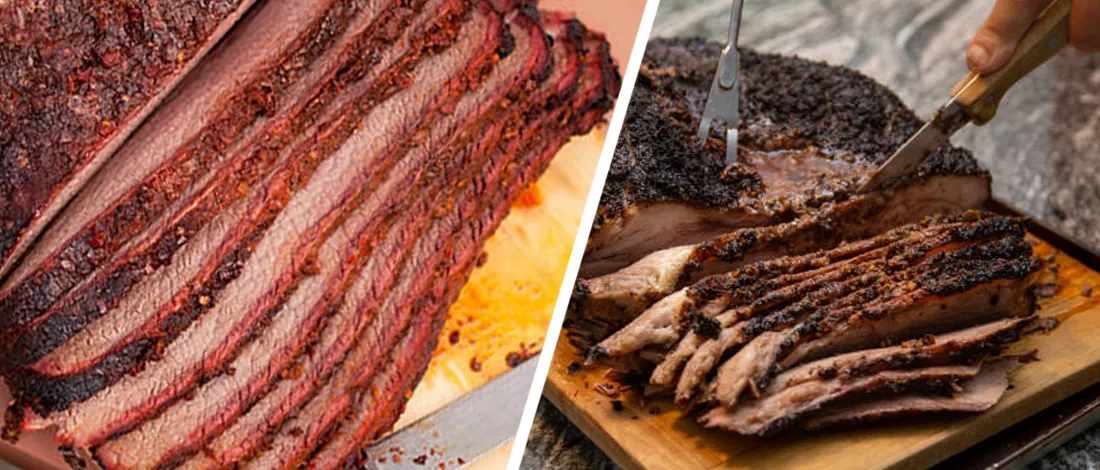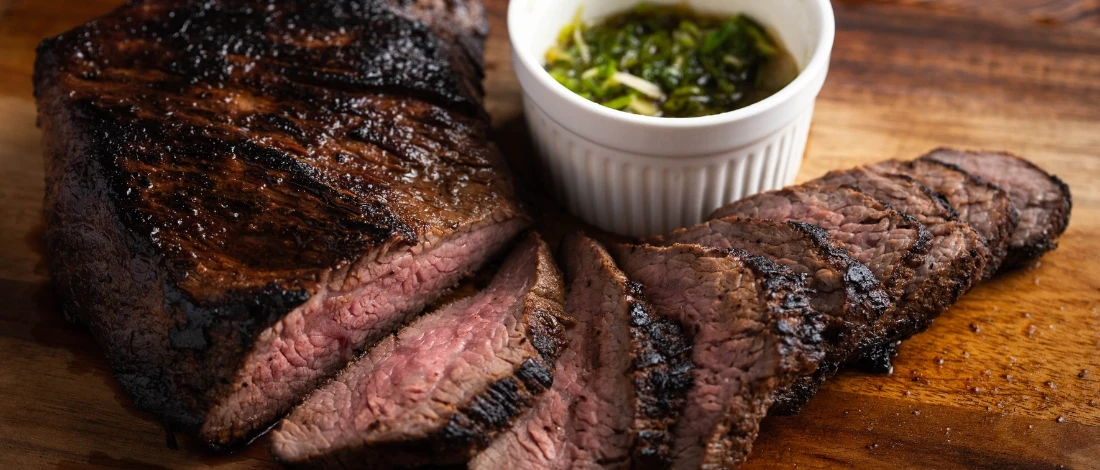Grilling bbq chicken seems like a pretty standard process, but did you know that grill masters such as Myron Mixon and Elliot Moss have specific strategies and techniques to get the best tender, seared, and delicious bbq chicken?
Quick Summary
- Grilling BBQ chicken involves pre-marinating, searing on the hot side of the grill, and slow cooking on the cool side.
- Turning and basting the chicken with BBQ marinade sauce during grilling enhances flavor and prevents drying.
- The grilling time varies depending on the chicken piece and grill heat, with most pieces done at an internal temperature of 165°F.
Grilling bbq chicken requires a few primary focus points: cleaning and prepping the chicken, marinating ahead of time, preparing the fire, placing the bird on the grill, when to turn and baste, and how long to grill.
How To Clean And Prep Your Chicken For Grilling?
Washing your chicken is essential to remove any dirt, blood, and bacteria it might have. You can also soak your chicken in some vinegar water which helps kill bacteria [1].
Drain the water out after rinsing and pat your chicken dry with a paper towel to remove excess water.
How To Marinate Bbq Chicken For Grilling?
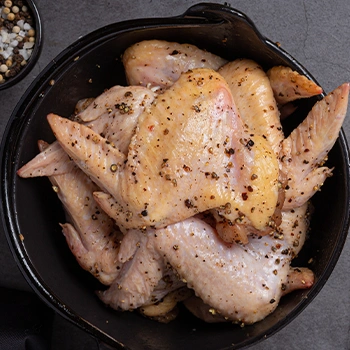
Seasoning your chicken before grilling helps with the flavor and tenderness of the chicken, especially when you marinate it for an extended period.
You can leave it to marinate for 2 hours minimum, and overnight would be best for maximum flavor.
Many chefs believe that you should only apply the bbq marinade after first searing the chicken on the grill.
That works well for a glazed effect, but the chicken won't absorb as much flavor because searing first will coat the outer layer.
Prepping The Grill For Bbq Chicken
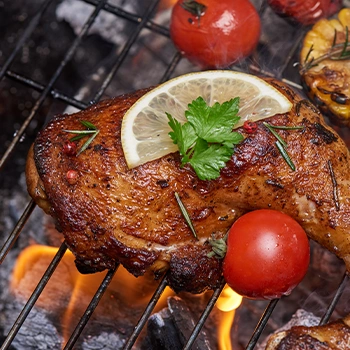
While prepping the chicken is essential, preparing the grill is just as necessary. The chicken will require a slow grilling process to cook through without leaving the middle raw entirely.
That especially applies to bone-in chicken, which takes longer to cook than the breast.
Due to this slow grilling process, you need to prepare the grill carefully. When heating the charcoal, ensure that you keep a grill section unheated directly.
That means you should move the coals to one side, leaving space where you will place the chicken above.
Using that method helps the chicken cook on low heat slowly because it is not over direct heat flames.
It is also essential to remember that chicken pieces such as breast or bbq wings will cook best over direct medium heat because they require less time to get done.
Also Read: Grilling Chicken Breast
Turning And Basting Bbq Chicken When Grilling
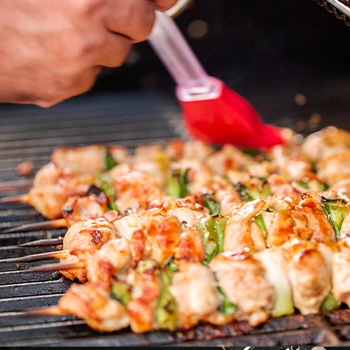
One of the most significant factors of a bbq is the smell.
As the food critic, chef, and cookbook author Katie Lee said that if summer had one defining scent, it would be the smell of barbecue.
While the primary bbq smell is fire, the rest comes from the food while turning and basting causes smoke on the hot racks [2].
An essential step in grilling bbq chicken is turning and basting the chicken with your bb marinade sauce.
You can add your bbq spices and condiments to the marinade but when you put the chicken on the grill, use the leftover sauce to continue to baste the pieces.
If you did not leave your chicken to marinate before grilling, this is extra necessary to ensure you get maximum flavor and prevent the chicken from drying out.
If you have marinated the chicken before grilling, you can leave the chicken to sear on each side for a few minutes first before starting to baste.
Doing that will give it a seared and glazed outer layer – specifically for the skin.
Grace Vallo, cook and founder of Tastefully Grace, suggests basting the chicken with barbecue sauce a few times as it cooks to impart it with extra flavor.
Doing that will give it a seared and glazed outer layer – specifically for the skin.
How Long Should You Grill Bbq Chicken?

The timeframe of grilling bbq chicken depends on the heat of your grill or oven. It also depends on what chicken pieces you are grilling and their sizes.
Here are a few examples of how long different chicken pieces will need on the grill:
- Chicken breasts need around 8-12 minutes at 425°F.
- Bbq wings need 10-15 minutes 450°F.
- Drumsticks need 30-35 minutes at 300°F.
- Chicken thighs need 30-40 minutes at 300°F.
- Whole chicken needs 60-90 minutes at 300°F.
Remember these are approximate timings, and you should always check that your chicken is cooked through before serving.
Most chicken pieces will be done at 165°F on the inside. Grill your bbq chicken at your discretion, and be mindful of the different grill, flame, and oven temperatures [3].
To make sure your chicken does not come out dry, Mike Futia of Grill Frenzy recommends brining it with water, salt and sugar for one to two hours before cooking.
Use Foil Or Drip Pans To Grill Bbq Chicken
Chicken releases a lot of its liquid when you heat it during grilling. Putting the chicken in foil can help retain these juices by trapping steam and cooking the chicken faster.
Putting a drip pan below the chicken on the grill will help catch any liquid the chicken releases and even any marinade drippings.
The water in the tray creates steam which keeps the temperature cooler, allowing the chicken to cook slowly but thoroughly without drying.
How To Grill Bbq Chicken In The Oven?
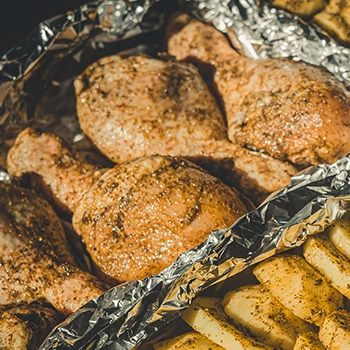
You can grill bbq chicken in the oven the same way you would on an outdoor grill. Depending on your chicken pieces, heat your oven to a medium setting around 350-450°F.
With the oven, it's best to add the marinade to the chicken before cooking and place it in a dish to help absorb the flavor and prevent drying. Your chicken will cook through at 165°F on the inside.
You could cover the chicken with foil to trap the steam and speed up the grilling process, as well as help with tenderness.
Remove the foil in the final 20-30 minutes of the cooking process and turn the broiler on for a seared and grazed effect, which you typically get from grilling.
Other Related Guides:
References:
- https://www.healthline.com/nutrition/should-you-wash-meat#water-vs-acid
- https://www.katieleebiegel.com/
- https://www.usda.gov/media/blog/2011/05/25/cooking-meat-check-new-recommended-temperatures


